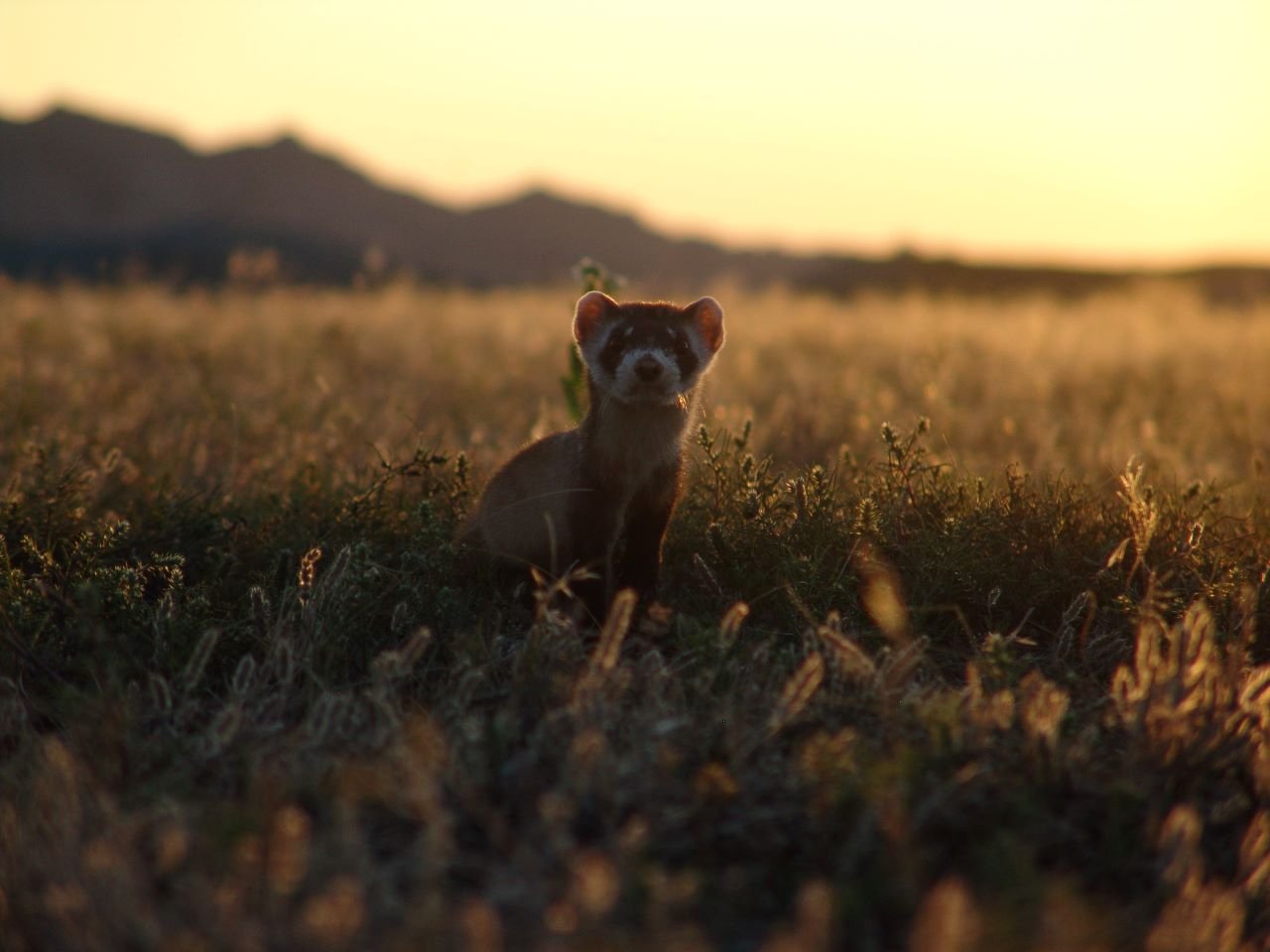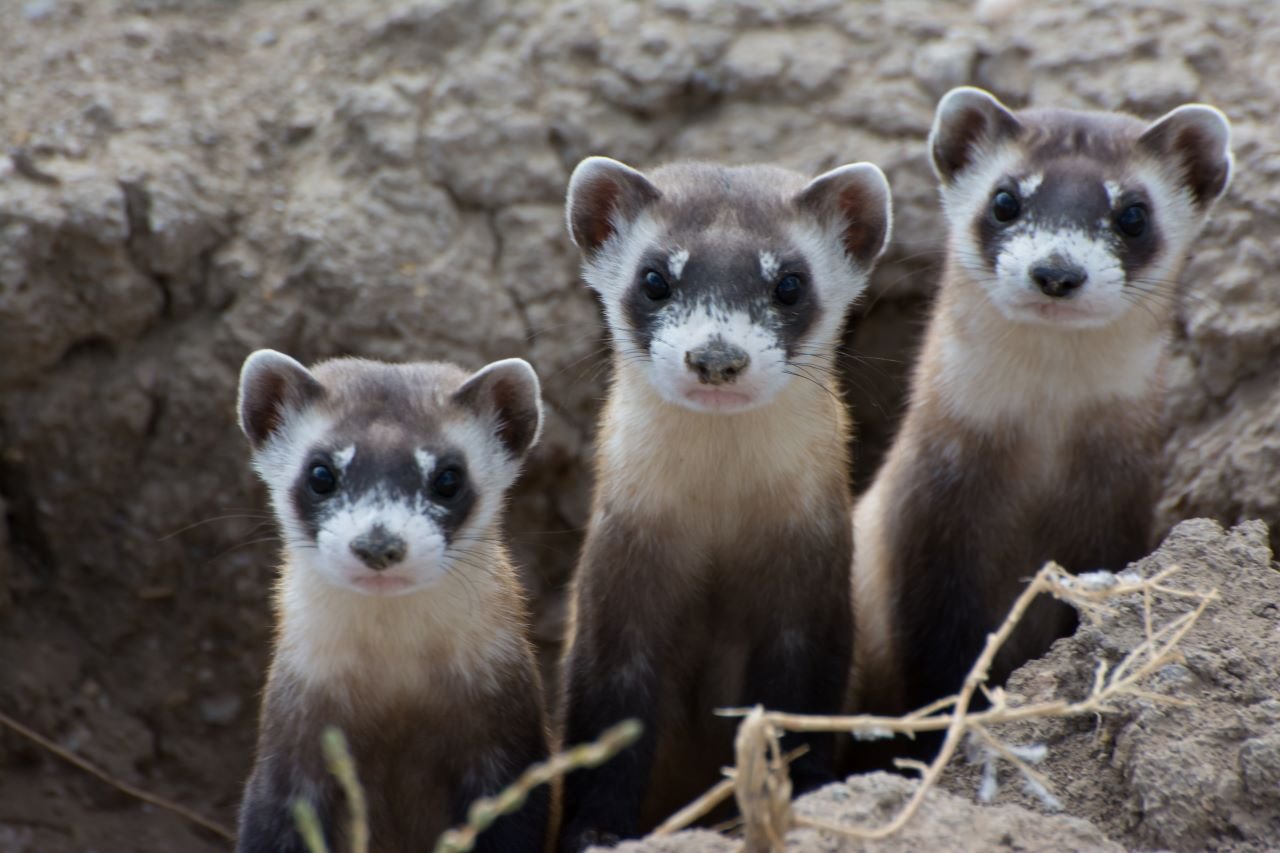When I first began working on black-footed ferrets over twenty years ago, the species was beginning to recover from what was once thought to be its final chapter. Black-footed ferrets are North America’s only native ferret and for nearly a decade they were presumed lost. Once roaming the Great Plains in the millions, Mustela nigripes nearly vanished as prairie dog colonies, its main prey and shelter, were wiped out and as sylvatic plague crept across the landscape. By the late 1970s, the species was considered extinct in the wild.

Black-footed ferret being reintroduced to Southwest Colorado.
Then, in 1981, a twist of fate changed everything: a ranch dog in Wyoming returned home with a dead ferret in its mouth. That shocking discovery led to the identification of a tiny surviving population and eventually set off a frantic rescue mission to capture those remaining individuals and launch an emergency captive breeding program. With just eighteen wild-caught ferrets, and only seven that successfully reproduced in captivity, the species got a second chance, but one with a catch: all black-footed ferrets alive today descend from those few founders.
For much of my career, I have focused on understanding the consequences of this genetic bottleneck: documenting changes in anatomy, physiology and fecundity due to this dramatic decrease in genetic diversity and increase in inbreeding. Ongoing breeding and reintroduction efforts have helped rebuild population numbers, but these efforts alone are not enough to secure the species’ long-term adaptation and survival. Low genetic diversity is more than a technical detail; it shapes everything from disease resistance to reproduction. When populations are small and closely related, individuals are more likely to inherit harmful traits and have less capacity to cope with new threats, such as emerging diseases or environmental change. Over time, this can mean health problems, reduced fertility, and a greater risk of extinction.

An adult female black-footed ferret active near sunrise in Conata Basin, South Dakota. Photograph: Travis Livieri, Prairie Wildlife Research
In response to this challenge, scientists have been exploring innovations such as biobanking and advanced reproductive technology. Elizabeth Ann, the world’s first black-footed ferret clone, was born in 2020 using DNA from “Willa,” a wild ferret that died in the 1980s and whose cells were preserved in San Diego’s Frozen Zoo, a facility that stores living cells, eggs, sperm, and DNA from endangered animals at extremely low temperatures for future conservation. Fortunately, cell cultures from Willa and another male ferret with no living descendants had been banked in the mid-1980s. Genome sequencing revealed that these individuals carried important genetic variation that no longer exists in the living population.
Researchers used interspecies somatic cell nuclear transfer (SCNT): they placed Willa’s genetic material into a domestic ferret egg cell, then transferred the embryo into a domestic ferret surrogate. Studies confirmed that domestic ferret oocytes are compatible with black-footed ferret DNA, a key requirement for embryo development. In May 2023, two more clones — Noreen and Antonia — were born from the same Willa cell line, each delivered by a domestic ferret surrogate. This confirmed that the cloning technique could be repeated reliably.
A major milestone soon followed: Antonia, one of the new clones, gave birth to three kits in 2024. This is the first time a clone from a previously lost genetic line has contributed offspring to the population, suggesting that cloned ferrets can now play a direct role in increasing genetic diversity in future generations.
Gene editing is also being explored as a complementary tool to make ferrets resistant to sylvatic plague, a deadly disease caused by Yersinia pestis, the same bacterium responsible for the bubonic plague. This exotic pathogen came from the Old World in the mid 1800’s, and because many wildlife species have not evolved with this bacteria, they are highly susceptible to it. It decimates both prairie dogs and ferrets, undermining reintroduction efforts and threatening ecosystem stability. Conventional plague management relies heavily on insecticides and vaccines delivered to prairie dog colonies, but these methods are labor-intensive and difficult to sustain across the ferret’s vast historical range.

Fewer than 500 black-footed ferrets are estimated to live in the wild today. Photograph: Kimberly Fraser/USFWS
Black-footed ferrets play a unique role as an obligate predator: their presence helps regulate prairie dog populations, which in turn shapes plant communities and provides habitat for other species like burrowing owls and swift foxes. More genetically diverse and resilient ferret populations could help maintain biodiversity and restore balance across entire grassland ecosystems.
The story of the black-footed ferret is far from over. Our work to keep the population growing and healthy will need to continue for years to come. Still, these early steps stand as a real-world example of how innovation in synthetic biology can help us adapt to evolving conservation challenges. Cloning and gene editing are not replacements for habitat protection or disease management. Rather, they are promising new tools that, alongside traditional approaches, offer complementary methods to address complex issues, helping species survive and thrive in a changing world.
Recent posts
